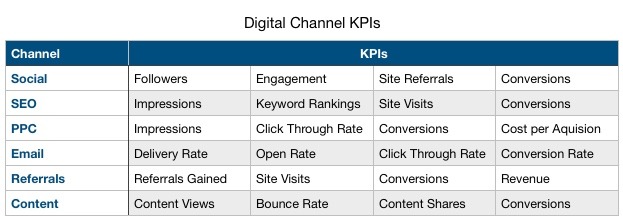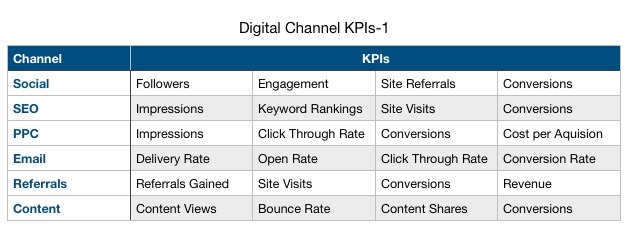
How to Write an Effective Digital Marketing Plan
When you launch a new website, it does not mean your customers will find it by accident. Having a digital marketing plan in place is absolutely essential for businesses who use their website to advertise their products and services and to consistently attract new customers and leads. In this article, we’ll discuss the benefits of establishing a digital marketing plan for your business and some examples of effective campaigns that are easy for anyone to deploy so you can reach your audience every time.
Where does traditional marketing fall short?
Traditional marketing has its place in your marketing plan and can be effective when paired with digital campaigns. However, often when comparing ad spend to ad spend, traditional advertising tends to cost more than digital advertising. Traditional marketing does not allow for active interaction with your audience like with a digital ad, and there are limited data and metrics available to you to inform your marketing decisions.
What are the key benefits of digital marketing?
Digital marketing presents better approaches to reaching your audience, can be tailored to support your goals and allow you to more effectively measure the results of your efforts. Digital marketing spans many mediums and it is important to choose the ones that are best suited for your industry and will help you reach your goals.
A powerful digital marketing strategy will help you to reach target audiences online and drive them to your website. Here are our recommendations for how to approach your strategy.
Step 1: Setting Your Business Goals
The first step in your digital marketing plan process should be establishing what you want to accomplish. Are you trying to attract more leads? Increase brand recognition? Drive users to your online store? Capture emails and grow your email marketing list?Reviewing your brand mission, previous goals and current online standing with your key competitors is a good to think about when setting your business goals. Note any goals that arise from this review (will?) determine what key performance indicators (KPIs) you’ll need to help you track progress. When choosing your KPIs use the SMART acronym: Specific, Measurable, Achievable and Time-bound. Some examples of good KPIs are:
- Reduce cost per conversion by 5% by end of Q3
- Gain 5 new products per month
- Add 25 users to email lists per month
It’s also necessary to use online tools to help you track these goals like: Google Analytics, Google Search Console, BuzzSumo, Moz, Constant Contact and SproutSocial. The table below presents different major KPIs used to measure the success of each digital channel:

Step 2: Establish Your Target Audience
Next, you should establish your target audience. For example, if you’re a health insurance company, your target audience might be health care facilities, healthcare professionals, businesses seeking those services to offer their employees and individuals seeking health insurance for themselves. Knowing your target audience is vital when determining what efforts and content will be most effective to reach them. To help you determine your target audiences’ personas and action they might take on your site, take note of the following:
- Basic demographics of your target audience including age, gender, location and financial standing
- Understand who this person is, what they do and where they like to shop
- Define problems that this persona has that your brand can solve
- Establish goals, desires, motivations and fears this persona may have that are relevant to your offering
- Note what products or alternatives to your brand this persona may have used in the past and has available
- Utilize tools like Google Analytics Audience Reports to gain a better understanding of your audience
- Establish what efforts will influence this persona
Step 3: Establish Conversion Funnels
A conversion funnel is a series of actions that a prospect follows before reaching one of your defined goals (conversions). An example could be: a user clicking one of your PPC ads, arriving at your landing page, clicking a call to action button, using your website to contact you, and successfully submitting the form. Part of your digital marketing plan needs to address attracting online users to your funnel and pull them through to your conversion action. As a user navigates through your sales funnel, they should have options on what their next step is and have next steps beer clear and easily navigated to.
When planning your funnels it is important to keep your user and their experience in mind at each stage of your funnel; specifically think about what they want and how you can give it to them. When planning and creating your funnels it can be helpful to answer the following questions with your audience personas in mind:
- How can we make the user more focused on our brand?
- What offer will attract our user?
- Why would they not act on the offer? What can be done to fix this?
- How can we recognize the users needs in advance?
Users will drop off on their way through your funnel for a variety of reasons such as a technical issue with the site, or poor UX design. Defining different conversion funnels will allow you to execute conversion rate optimization at the different points in your funnel, creating more conversions as you refine the process and iron out issues along the way. Google Analytics is a great tool to measure the success of your different funnels. You can read more about establishing conversion funnels in this article.
Step 4: Review Previous Efforts
Auditing your previous efforts helps you understand what has been successful in the past and, using your KPIs to measure effectiveness, determine what improvements can be made. If your brand is just stepping into the digital space this may be quick and straight forward but if you have pursued digital efforts in the past it may be more time intensive. First, define what digital assets your business has. A digital asset is a piece of content that is searchable online, provides value to your brand and is used to increase brand exposure. Examples include:
- Your website
- Social media profiles
- Original imagery & graphics
- Current digital campaigns
- Email lists
- Video content
- Blog articles
- Resource articles
Next, track your digital assets and their effectiveness using your KPIs. Tracking helps you to understand how users are interacting with your brand and what resources you can use in the digital marketing plan you are curating. You can track online brand mentions using tools like Mention, BuzzSumo and Google Alerts.
Do you also use paid media assets? Track those as well. Paid media assets are usually paid promotions used to increase brand exposure, such as:
- PPC advertising
- Social media promotions
- Online video ads
Understanding your previous efforts will give you an idea of what digital channels are available to you and how successful you have been in pursuing them in the past. As your plans and goals change, previous digital assets may become more or less valuable in the framework of your new digital marketing plan and goals.
Step 5: Define Your Marketing Strategy
At this point you should have a clear understanding of your business goals, KPIs, target audiences, a mapping of your previous marketing efforts, and the digital assets at your business’s disposal. The next step is to establish what digital marketing methods and tactics can be used to reach your previously defined goals. There are many digital marketing efforts available to you, but some major approaches your brand can utilize include:
- SEO
- PPC
- Local Search Marketing
- Content Marketing
- Remarketing
- Email Marketing
- Social Media Marketing
- Automated Marketing
- Influencer Marketing
- Video Marketing
- Landing Pages
- Podcast
- Webinar
- CTAs
We have experience using all of the above mentioned efforts, so if you have any questions, our blog has a lot of great information, or you can contact us for specific questions. We’ve outlined a few example goals below for inspiration:

Goal: Increase web traffic
Metric: An increase of 300 additional organic site visits in Q1 over Q1 of the previous year
Tactics:
Create high quality blog content
Promote content through social media & email campaigns
Target blog topics that are valuable for you to rank highly for and optimize the content
Write 3 guest posts for other high quality publications
Goal: Increase Facebook Followers
Metric: 150 new followers by the end of Q1
Tactics:
Post high quality content inline with brand on Facebook
Plan content that will resonate with your target audience
Respond to all messages and comments
Goal: Increase leads
Metric: 10 new leads by the end of Q1
Tactics:
Execute a PPC campaign to increase qualified leads
Create high quality content relevant to your audience
Execute a SEO campaign to increase organic traffic
Step 6: Develop Additional Digital Assets
Now that you have defined your tactics involved in reaching your goals, you may be missing some digital assets required to execute your new plan. At this point you can work internally to establish a list of assets needed and a timeline for how these will work into your plan.
Remember that when creating new digital assets, it is important to consistently use your brand elements and stick to your brand tone. Having a consistent brand online will help users to readily recognize your business and keep you top of mind.
Also be sure to refer back to your buyer personas and keep them in mind when establishing your tactics.
Step 7: Measure Your Campaigns Success
Now that you have an established campaign in action your work isn’t over, the next step is to measure the effectiveness of your campaign. This is the point when having proper site analytics setup and a tracking system in place is essential. Measuring the effectiveness of your previously established strategies and KPIs in conjunction with the timelines established for your different goals will help you adjust any efforts that may not be working to achieve your goals.
Make sure you have access to the metrics you need using platforms like Google Analytics or HootSuite. Create an internal tracking procedure so that you are aware of how your KPIs have changed from month to month. Be sure to check the engagement resulting from each one of your digital assets to get an idea of what your audience responds to. Finally, if an element or channel in your campaign is not producing the desired result, analyze the data available to you and adjust your campaign accordingly.
The Role of Your Website
Your website is the foundation of all of your digital marketing efforts and where all of your incoming traffic should be directed. Even if you have an effective digital marketing strategy, if it points users to a poor website experience, they will not convert into customers or return to your site. A few things to think about when considering your website’s ability to convert customers:
- The center of your efforts— all of your content, advertisements and social media posts should point back to your site.
- Your website content should be optimized to rank for searches that are relevant to your business so that it appears prominently in search engines. You can read our full article on Search Engine Optimization here.
- Your website should also be developed with a solid technical SEO foundation by a developer you trust and can easily work with to make changes.
- If your website is outdated or in need of a redesign, it is likely that your digital efforts will not be as successful as they could be. You can read our article discussing when you need a web redesign here.
Auditing Your Ongoing Strategy
All of these marketing efforts mean naught if you do not track and regularly audit your progress. Schedule regular evaluations of your strategy based on your KPIs and track your conversion funnels, adjusting as necessary. If you need help, contact our digital marketing team. With over two decades of experience under our belt, we know the world of search ranking, advertisements and customer conversions and would be happy to draft a plan that meets your budget and business goals.


